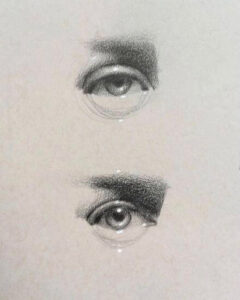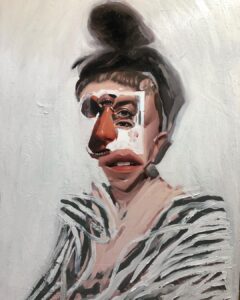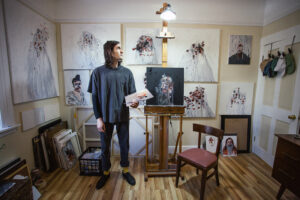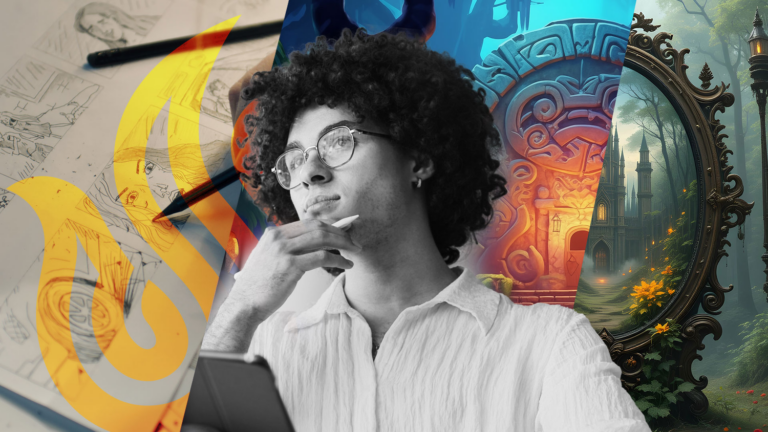USV students have the fascinating opportunity to work with Emilio Villalba, which brings with it a deeply thoughtful experience. Even a casual glance at his work requires a re-calibration. It demands a moment in time to re-think what it means to see, to observe, to believe.
The following interview first appeared in The Leaf, an InCase publication. It has been condensed and lightly edited.
Noise is defined as a loud, confused or senseless outcry. Any sound that is undesired or interferes with one’s hearing of something. But Emilio Villalba doesn’t hear noise—he sees it. He’s inspired by it. He paints it. Villalba allows noise to shed its traditional, uncontained rationale, exploring its visual dimension with textures, colors, angles and negative space in a contained canvas medium. The result is a dissonant one—a peculiar, yet abrupt, reflection that details the distortion and impact of extraneous forces in day-to-day reality. In other words: a loud, confused and senseless perspective of the human condition.

Q: What is the story behind your first painting? What was it, and what served as your inspiration?
Emilio: I’ve been painting off and on for about 10 years, but for the last three, I have consistently painted without many breaks. The first paintings acted merely as a warm-up to get the ideas flowing. When I painted my first “distorted” portrait, there wasn’t necessarily a concept for what the image should look like, but rather a process. I’d paint a portrait in black and white, redraw the same portrait from a different perspective on top, then paint that layer in color. I’d stop about halfway through the color step of the painting and call it finished. I enjoyed the mystery of the incomplete, and the black-and-white layer complemented the color well.

Q: Your paintings are laden with dissonance by distortion. Can you detail the evolution of this perspective from its origin to present?
Emilio: I’ve always seen my work relatively abstract in comparison to most figurative artists, especially the ones I went to school with. I started as an abstract major, and from the very beginning, I learned I liked noise; but not just any noise—contained noise. In this case, the portrait becomes the noise where I can experiment and play around with the placement of eyes and features, as well as other elements of design—color, shape, etc. Then, on the outside, the background would be flat. For me, the challenge is finding balance on the canvas between the noise and the flat in a pleasing way for myself. What I find pleasing to look at changes every week [Emilio laughs].

Q: Tell us about your progression as an artist. In what direction is it headed?
Emilio: For me, painting is a lifestyle, so I’m always thinking about paintings and imagining rhythms and colors for future pieces, but it’s hard to say where it’ll end up. Right now, I’ve been thinking about moving into a fuller figurative direction. Painting the nude is very classical—a traditional direction that I’ve never really explored. Recently, I had two nightmares that have sparked a direction for the work. I’ve started some sketches on paper, but we’ll see if they end up on canvas.


